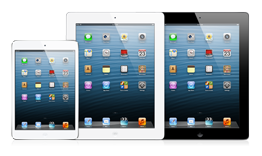 Apple’s press conference on 23rd of October not only unveiled highly-anticipated iPad mini, but also brought a new-new iPad, 13-inch Retina Mac Book Pro, and a slightly tuned Mac Mini.
Apple’s press conference on 23rd of October not only unveiled highly-anticipated iPad mini, but also brought a new-new iPad, 13-inch Retina Mac Book Pro, and a slightly tuned Mac Mini.
While for Apple fans this is a great news in itself, for people genuinely interested in mobile technology, this might be interesting as well. A closer look at the new iPad 4th gen and iPad mini specs unveils an LTE module, which is compatible with European LTE bands. The new A6X CPU is just a performance tuning really, as A5X had a hard time powering the huge Retina display.
Two models, namely A1460 (iPad with Retina display, 4th gen) and iPad mini A1455 support LTE bands 700 MHz, 850MHz, 1800 MHz, 1900 MHz and 2100 MHz. All LTE networks in Poland currently use the 1800 MHz band, so the 4th gen iPad as well as iPad mini should work without problems. The only issue, one might encounter, is the nano-SIM standard. Such SIM cards are not widespread yet and migh not be readily available.
It is worth mentioning, that both new iPads can use high speed WiFi using either 2.4 or 5 GHz bands (a/b/g/n), as well as 40MHz channel bonding mode in 802.11n, which can nearly double the throughput.
This is not all. Both models mentioned in the previous paragraph also support CDMA networks (EV-DO) such as American Verizon, or polish Orange Freedom Pro. Unfortunately the latter uses a very specific 450 MHz band, which is not widely used worldwide, and new iPads unfortunately don’t support it. It might however become supported in future, which means iPad with cellular module might in future become The internet tablet, able to use nearly any band and almost any wireless technology. It would give Apple an unprecedented technological edge.

